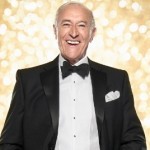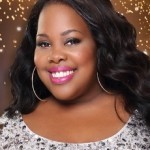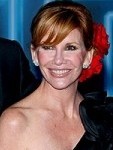Finding Faces
Kaitlyn Dunnett/Kathy Lynn Emerson here. It’s confession time—I’m not very good at finding fresh ways to describe the physical appearance of my characters. What do they look like? Sometimes I have no idea.
I do make character sheets on which I record height, weight, build, hair and eye color and so on, but when it comes to finding a way to make each one stand out for the reader I am always left fumbling for the right words.
Over the years I’ve worked up a “cheat sheet” listing details that describe a character’s attributes. It’s broken down into the following categories: attitude, build, complexion, ears, eyes, face and facial hair, fingers, gait, hair, hands, laugh, nervous habits, nose, smell, and voice. Yes, those are alphabetical. No, they don’t have a particular rationale behind them, other than being areas where I’ve managed to accumulate a variety of descriptive words and phrases that I can mix and match when creating a new character. Under gait, for example, the list includes awkward, slight limp, rolling, slow-moving, hobbling, scuttling, shambling, light on his feet, shuffling movement, and flat-footed. Hair omits the standard colors and includes straw-colored, mud-colored, rich blue-black that reflects the sunlight, sand-colored, ginger, and also lank, bald, thinning, and receding hairline.
 Such word lists are great as far as they go, but sometimes I have the feeling I should be doing more. When I was working on The Scottie Barked at Midnight, which has an unusually large cast of new characters, I decided to try something I know some writers have used successfully—clipping photos from magazine ads to help visualize what their characters look like. The problem, of course, is that most of the people in those are too good looking. News stories provide more variety. In fact, years ago, I had a certain small-time Maine politician in mind when I was creating a particularly smarmy villain.
Such word lists are great as far as they go, but sometimes I have the feeling I should be doing more. When I was working on The Scottie Barked at Midnight, which has an unusually large cast of new characters, I decided to try something I know some writers have used successfully—clipping photos from magazine ads to help visualize what their characters look like. The problem, of course, is that most of the people in those are too good looking. News stories provide more variety. In fact, years ago, I had a certain small-time Maine politician in mind when I was creating a particularly smarmy villain.
 Other than that, though, the only time I’ve matched a character with a real person’s picture was after the fact. Rosamond Jaffrey’s late, unlamented father, Sir Robert Appleton, from my Face Down mysteries and, now, the Mistress Jaffrey mystery series I write as Kathy Lynn Emerson, found his perfect embodiment in Colin Firth, as seen as the not-so-nice Lord Wessex in Shakespeare in Love. Other attempts to find faces that match my imaginary people usually end up with me saying “he’s a cross between x and y.”
Other than that, though, the only time I’ve matched a character with a real person’s picture was after the fact. Rosamond Jaffrey’s late, unlamented father, Sir Robert Appleton, from my Face Down mysteries and, now, the Mistress Jaffrey mystery series I write as Kathy Lynn Emerson, found his perfect embodiment in Colin Firth, as seen as the not-so-nice Lord Wessex in Shakespeare in Love. Other attempts to find faces that match my imaginary people usually end up with me saying “he’s a cross between x and y.”
 One caveat—it’s almost always a bad idea to come right out and describe someone as looking like a celebrity. For one thing, it dates the book. And, of course, this doesn’t work at all well in an historical unless you’re sure your readers will know what a character means when he says someone is a dead ringer for Lord Byron or King Henry or Bram Stoker (who, incidentally, was quite a good-looking man).
One caveat—it’s almost always a bad idea to come right out and describe someone as looking like a celebrity. For one thing, it dates the book. And, of course, this doesn’t work at all well in an historical unless you’re sure your readers will know what a character means when he says someone is a dead ringer for Lord Byron or King Henry or Bram Stoker (who, incidentally, was quite a good-looking man).
 But to get back to the Liss MacCrimmon series—the plot of The Scottie Barked at Midnight centers around a television talent competition called Variety, Live. Making up the rules and deciding on each character’s talent was the easy part. I still had to describe each contestant in a way that would make them separate and distinct in the reader’s mind. Second confession—I don’t much care for The Voice or American Idol or any others of that ilk. The only competition I do watch is Dancing with the Stars . . . and that gave me an idea.
But to get back to the Liss MacCrimmon series—the plot of The Scottie Barked at Midnight centers around a television talent competition called Variety, Live. Making up the rules and deciding on each character’s talent was the easy part. I still had to describe each contestant in a way that would make them separate and distinct in the reader’s mind. Second confession—I don’t much care for The Voice or American Idol or any others of that ilk. The only competition I do watch is Dancing with the Stars . . . and that gave me an idea.
 Why not, I asked myself, use former competitors on Dancing with the Stars as the inspiration for my characters? There are certainly plenty of different physical characteristics on display in any given season. So I gave it a try. You’ll have noticed that I’ve sprinkled photos of celebrities throughout this post. The characters they inspired are, in the order they appear in the post, M.C. Roy Eastmont and contestants Willetta Farwell, Mo Heedles, Elise Isley, Iris Jansen, Hal Quarles, and “The Great Umberto” aka Oscar Yates. Keep in mind that I only borrowed physical features, not the real person’s personality or talent.
Why not, I asked myself, use former competitors on Dancing with the Stars as the inspiration for my characters? There are certainly plenty of different physical characteristics on display in any given season. So I gave it a try. You’ll have noticed that I’ve sprinkled photos of celebrities throughout this post. The characters they inspired are, in the order they appear in the post, M.C. Roy Eastmont and contestants Willetta Farwell, Mo Heedles, Elise Isley, Iris Jansen, Hal Quarles, and “The Great Umberto” aka Oscar Yates. Keep in mind that I only borrowed physical features, not the real person’s personality or talent.
 So, what do you think? If you’ve read the book, do these photos fit your idea of the character? If you haven’t read it, does the physical appearance of the person in the picture seem to go well with the character’s name? All bets are off, by the way, for Mo Heedles. She is a real person who won character-naming rights at a Malice Domestic auction after the book was already written. Before that, “Mo” was named Carla Uvedale.
So, what do you think? If you’ve read the book, do these photos fit your idea of the character? If you haven’t read it, does the physical appearance of the person in the picture seem to go well with the character’s name? All bets are off, by the way, for Mo Heedles. She is a real person who won character-naming rights at a Malice Domestic auction after the book was already written. Before that, “Mo” was named Carla Uvedale.
 There’s no question that using this technique gave me the variety I was after for this book, but I found that I had no particular urge to do it again when I was writing this year’s Liss MacCrimmon mystery, Kilt at the Highland Games (July). That said, I’d be very curious to hear about other writers’ experiences in taking the inspiration for their characters’ appearance from pictures of real people. Did it work for you? Have you done it more than once? Chime in, please, and share.
There’s no question that using this technique gave me the variety I was after for this book, but I found that I had no particular urge to do it again when I was writing this year’s Liss MacCrimmon mystery, Kilt at the Highland Games (July). That said, I’d be very curious to hear about other writers’ experiences in taking the inspiration for their characters’ appearance from pictures of real people. Did it work for you? Have you done it more than once? Chime in, please, and share.
Kaitlyn Dunnett/Kathy Lynn Emerson is the author of over fifty books written under several names. She won the Agatha Award in 2008 for best mystery nonfiction for How to Write Killer Historical Mysteries and was an Agatha Award finalist in 2014 in the best mystery short story category for “The Blessing Witch.” Currently she writes the contemporary Liss MacCrimmon Mysteries (The Scottie Barked at Midnight) as Kaitlyn and the historical Mistress Jaffrey Mysteries (Murder in the Merchant’s Hall) as Kathy. The latter series is a spin-off from her earlier “Face Down” series and is set in Elizabethan England. Her websites are www.KaitlynDunnett.com and www.KathyLynnEmerson.com




